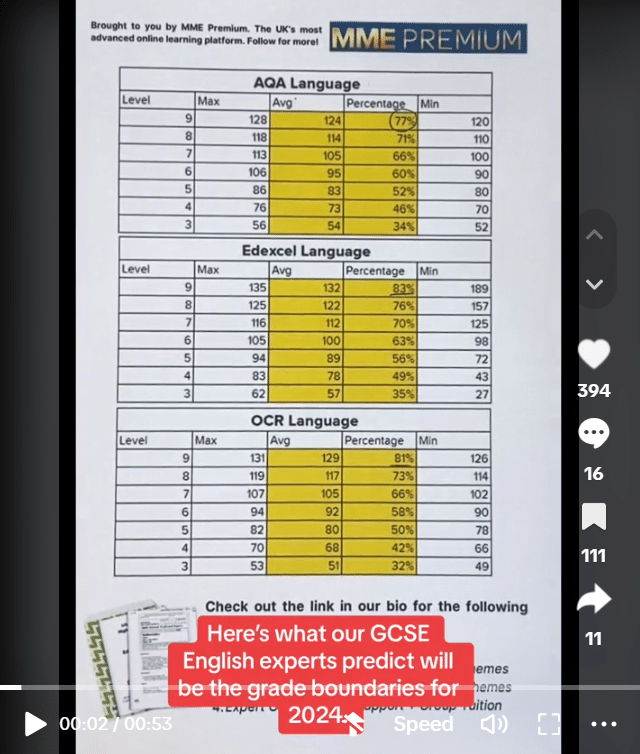Reading Non-Fiction: Decoding the Texts
Reading Non-Fiction: Decoding the Texts Revision
Decoding Texts
Some non-fiction texts can be complicated at first, so knowing how to read in a analytical way, and what to look for when reading, is vital!
Reading with an aim in mind helps you focus on effectively answering the questions in your exam paper.
Thinking about the audience of the text, what the purpose is and how it communicates that to the reader helps you think about the reasons behind language and structural techniques, and even the form chosen by the author.
Audience
The audience of the text is who reads it- it’s who the text is meant for!
You are the audience for this box, for example!
Who Is the Audience of Your Text?
The audience of a text can be general or specific. There can be more than one intended audience, for example a children’s book might aim to entertain both children and their parents.
Things like the format, tone and the information given within the exam question can give you an idea of who the audience is meant to be.
Try to think about the impact on the audience, who at the time, would have thought about the subject matter or how relevant it would be to them.
Don’t go into a history lesson, just consider the context and the background of the audience and the text you are analysing.
Some questions about audience to ask yourself while reading
- What time was the text written? Contemporary? Victorian? Shakespearian? This may give you an idea of a few social and cultural norms the text may either disregard or adhere to…
- Is the writer friendly with the audience? Can you spot any informal or conversational tone indicators? Or vice versa? Is Standard English and proper grammar used? This could indicate the age range of the intended audience, for example more sophisticated language might mean that the text is aimed at an older audience, in contrast slang might indicate it is aimed at younger people.
- What structural devices are used? What does this suggest about the intended audience? Often things like columns or headings can organise information.

How does Audience Affect How Things are Written?
The audience can inform what happens in a text, what tone the author takes, what form they use and the subsequent structure of their writing. For example, there may be sophisticated vocabulary may indicate the text is aimed at someone interested in the subject at hand.
Columns, paragraphs, bullet points, rhetorical questions or an informal/formal tone use are all techniques that are important to consider when analysing a text’s audience.
It’s important to work out the intended audience in order to work out the purpose of a text.
Text Purpose: How to Figure It Out
The purpose of a text is the reason the writer has written it – what is the text trying to achieve?
There are a few reasons a text may be written, for example to…
- Explain
- Describe
- Argue
- Persuade
- Advise
- Instruct
Some techniques that may help you work purpose out are any quotes that are included, persuasive techniques, emotive language, or lack thereof.
Even the format of the text can help you to get an idea of the purpose:
- A review might be to persuade, a report would be to inform, for example.
- Formats like a letter, magazine or article may indicate the purpose is to entertain, persuade, or describe for example.
However, there can be multiple purposes to a text, for example a newspaper article might contain a bias so it’s purpose is to inform but also persuade the reader of the writer’s opinion.
Writing about multiple purposes (if there any) is a good idea in the exam, as long as you use examples to back up your points.
Why is the Purpose Important to Figure Out?
Showing an understanding of the purpose of the text shows the examiner your reading skills.
It proves your ability to read and process information in a variety of contexts.
It will also help with your closer analysis, as you can now put more detail into it.
Explaining the effects of the language and structure can involve discussing whether or not the purpose is fulfilled or not.
Particularly in questions assessing AO3, an understanding of purpose is vital, as you may be asked to assess the success of the authors in their aims, or compare what the purpose of each text is.
POV and LOA
Don’t be alarmed by the acronyms!
POV= Point Of View
LOA= Line Of Argument
So, what does this mean?
Think of POV as the eyes that you read the text with…the point of view is the perspective of the text, who it comes from and what their motivations are.
For example:
‘I am going to the shop to get myself an ice cream’: first person point of view
‘Have you forgotten your book?’: second person point of view
‘They reached into their bag/She reached into her bag/ He reached into his bag: third person point of view
Line of argument naturally follows this. It is the reasoning the writer uses to support their view.
How do we Find the Point of View and Line of Argument of a Text?
POV can be easily identified through the pronouns used in the text, as shown in the example above.
Similarly to audience, reading through your chosen text with some questions in mind can help you focus on the POV and LOA.
The content of the text is important to consider when looking for LOA – is there a particular angle that is focused on? Is there a bias in the text to a particular side of a debate?
Looking at the language can be a good way to work out the line of argument… is the language persuasive? Informative? Casual?
What structural elements are in place to help you find the point of view? Are there bullet points listing key points? Are specific phrases repeated?
Working out the line of argument needs an understanding of the format too. The line of argument may be organised differently depending on whether the text is a letter, article, report or even an online forum page.
Non-Fiction

Non-fiction texts are based on true events, like a newspaper article or report.
These are best for relaying information to the reader. You may find a formal tone, facts and figures, and a stronger line of argument.
Their purpose will often be to inform, explain, or advise.
Let’s have a closer look…
Why are each of them are tested?
These are tested to see whether you can distinguish between different types of text, and are able to analyse each one appropriately in your own writing.
How to spot them
Non-fiction texts use a variety of techniques like facts and figures, listing, bullet points, columns, subheadings.
Fiction texts will use more descriptive imagery or emotive language to convey the author’s point of view.
Example: Purpose
Below is an extract from a model answer about how to incorporate the purpose into your writing:
‘The author uses repeated rhetorical questions to engage the reader and create a conversational tone, adding to the overall persuasive aim of the text. This is persuasive as it makes the reader feel as though the author is talking directly to them and as a result, a bond is formed between the author and the reader.”
Here, the learner analyses a language technique, ‘rhetorical questions’, to make a point about the purpose of the text.
It is important to explain the effect of the technique on the reader while discussing the purpose. The learner explains how it works to persuade the reader by establishing a relationship between the author and the reader.
So, now you know how to find the purpose of the text, you can now include them in your answers!



